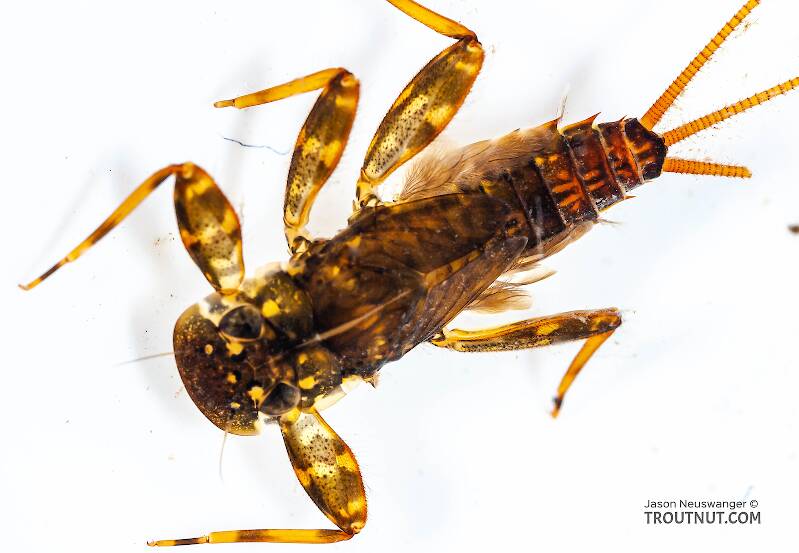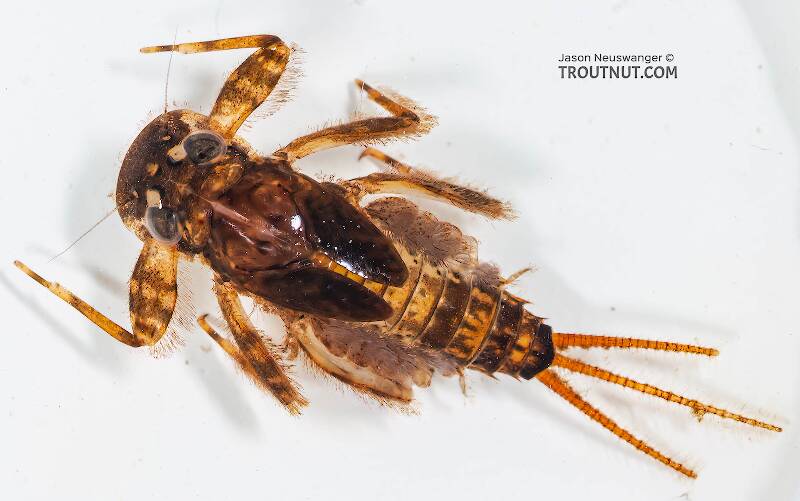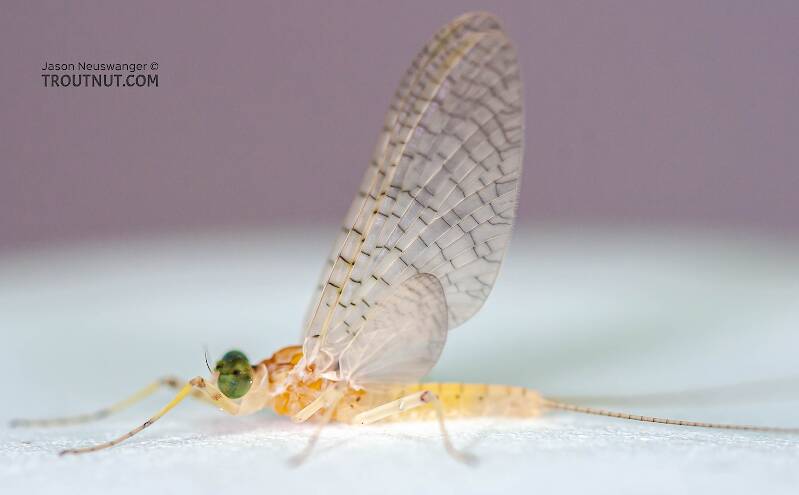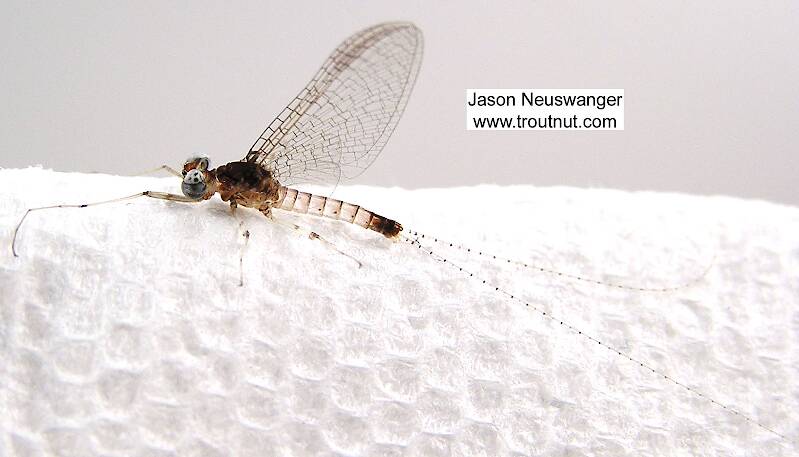
Salmonflies
Pteronarcys californica
The giant Salmonflies of the Western mountains are legendary for their proclivity to elicit consistent dry-fly action and ferocious strikes.
Featured on the forum

This one was surprisingly straightforward to identify. The lack of a sclerite at the base of the lateral hump narrows the field quite a bit, and the other options followed fairly obvious characteristics to Clostoeca, which only has one species, Clostoeca disjuncta.

Troutnut is a project started in 2003 by salmonid ecologist Jason "Troutnut" Neuswanger to help anglers and
fly tyers unabashedly embrace the entomological side of the sport. Learn more about Troutnut or
support the project for an enhanced experience here.
Cream Cahills
Like most common names,"Cream Cahill" can refer to more than one taxon. They're previewed below, along with 5 specimens. For more detail click through to the scientific names.
Mayfly Species Stenonema femoratum
These are often called Cream Cahills.
This species is only one of many minor Light Cahills and the only species remaining in the Stenonema genus after the classic superhatches were reclassified into Maccaffertium and Stenacron. Its habitat and behavior is not different from those species, except as noted below, and you should consult the pages for those genera if you need angling information for this hatch.
Mayfly Species Stenonema mediopunctatum
These are often called Cream Cahills.
I have seen no mention of this species as a fishable hatch in angling literature, but it is noteworthy for the unusual coloration of the male spinners, which Malcolm and Knopp describe in Mayflies: An Angler's Study of Trout Water Ephemeroptera :
...the male only exhibits this coloration on segments eight to ten, against an otherwise whitish to translucent body.
See 1 more specimen...
Mayfly Species Stenonema mexicanum
These are often called Cream Cahills.
This species is usually mentioned under its former name, Stenonema integrum. Now integrum is a subspecies of Maccaffertium mexicanum. It is not said to produce fishable hatches.
I've tentatively identified several specimens I collected as members of this species based on their color patterns. It may be more likely that they belong to a Midwestern color variety of Maccaffertium vicarium which produces good hatches on the river where they were collected.
I've tentatively identified several specimens I collected as members of this species based on their color patterns. It may be more likely that they belong to a Midwestern color variety of Maccaffertium vicarium which produces good hatches on the river where they were collected.
Mayfly Species Stenonema modestum
These are often called Cream Cahills.
See 7 more specimens...
References
- Knopp, Malcolm and Robert Cormier. 1997. Mayflies: An Angler's Study of Trout Water Ephemeroptera . The Lyons Press.






